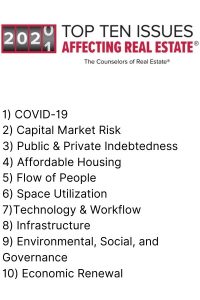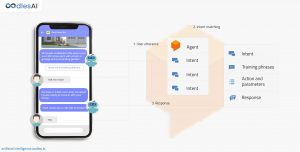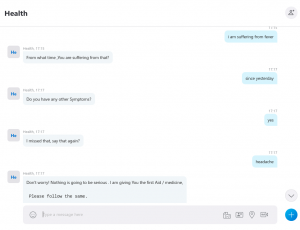Building a Dialogflow Chatbot for Real Estate Businesses
Sanam Malhotra | 16th September 2020

Now a household name, chatbots are disrupting new business avenues to augment growth opportunities beyond the human scope. How then, can AI chatbots create value for a crippled real estate market amid crisis? Frameworks like Dialogflow offer a seamless adoption of chatbots for real estate with simplified bot training and deployment options. We, at Oodles, an established Chatbot Development Company, elaborate on how a Dialogflow chatbot for real estate can boost sales effortlessly.
Why Real Estate Must Capitalize On AI-powered Chatbots
Affordable housing, dwindling demands, and technology adoption are some of the vexing challenges that continue to impede the real estate market. Worse, the ongoing pandemic has snow-balled the issues by adding health and safety risks for customers during site visits.

AI, machine learning, and other emerging technologies are accelerating the pathway of real estate businesses to streamline operations while retaining customer satisfaction.
Powered by Natural Language Processing (NLP) techniques, chatbots offer conversational AI capabilities to real estate platforms. From residential to corporate real estate, AI-driven virtual assistants can engage customers through quick and intelligently matched responses. More so, chatbot generated personalized messages, deals, and customer loyalty programs give a competitive edge to real estate businesses.
Below are the top reasons why chatbot integration will boost real estate growth-
a) 24/7 availability across platforms
b) Accurate understanding of customer needs
c) Human-like conversational flow
d) In-built lead generation forms
e) Lower operational cost and time
f) Automated client follow-ups
g) Contactless virtual site tours, and more.
To build chatbots, there are scores of chatbot development frameworks available including IBM Watson, Amazon Lex, Google Dialogflow, and Microsoft Azure. In this edition, we shall explore the significance of building a Dialogflow chatbot for real estate businesses.
Also read | Chatbot Development in 2020: An Expert Guide to Tools & Techniques
What Makes Dialogflow an Effective Chatbot Development Framework?
Dialogflow is a Google-owned chatbot development framework that facilitates the development and deployment of machine learning-based chatbots. It is backed by an NLP engine that enables businesses to trace human-customer interactions easily and efficiently.
Dialogflow app development powers real estate businesses to target customers remotely while augmenting their marketing and sales efforts.
Here are the most significant Dialogflow features for real estate-
a) Omni-channel chatbot development
b) Chatbot integration with messaging platforms
c) Complex queries handled with machine learning
d) Serverless applications offer scalability
e) Knowledge Connectors for automatic response search
f) Voice-based and translation features
Dialogflow is a goldmine for real estate businesses to build interactive and adaptive virtual assistants. In the next section, we shall take an inside look at how Dialogflow’s elements work together to power human-like interactions.
Also read | 5 Top-notch Chatbot Development Frameworks for Enterprises
Workings of a Real Estate Dialogflow Chatbot
Building a Dialogflow chatbot for real estate requires extensive training to ensure that chatbot can interpret customer inferences clearly. The architecture of Dialogflow is divided into four main elements as below-
1) Intents
Intents define a customer’s utterances or intentions during a thread of conversation with a real estate chatbot. For instance, “Where can I get houses under 40 lakhs?” or “What are the best corporate spaces near me?”
Under the hood, intents consist of training phrases, action and parameters, and responses. These elements enable Dialogflow to match a customer’s input with the closes intent using the knowledge base created by businesses.

It is imperative to train the bot with relevant intents that match expected real estate customer queries, needs, and preferences.
2) Entities
For similar intents, we need to create an entity that categorizes and lists down topics that the chatbot can discuss. So, if the user asks, “Show me some read-to-movie-in apartments”, the bot reaches for an entity named “Movie-in Apartments”.
Entities can further contain different types of entries like ‘Fully furnished apartments’, ‘2BHK furnished apartments’, or ‘un-furnished 3BHK apartments’.
3) Contexts
Dialogflow contexts are quite similar to our natural language contexts that enable bots to understand the overall circumstances of the conversation. It triggers the chatbot to ask customers more precise questions to provide an accurate response.
4) Fulfillment
The fulfillment feature in Dialogflow further enhances the conversation through real-time data transmission across business service webhooks. Like an API call, a Dialogflow webhook sends a customer’s request, for say an appointment, to check and update the availability.
For instance, a query for “Book my appointment with this property’s broker for tomorrow” will trigger a request to business service. Once confirmed, the bot can respond, “Yes, we have booked your appointment with the broker at 2 pm tomorrow. Will that be suitable?”
Also read | Why WhatsApp Chatbots for eCommerce are Must-have Marketing Tools
Oodles AI: Real Estate Chatbot Development Partner
Technology adoption hs become incumbent for businesses across industries to reach a larger audience with greater agility. We, at Oodles, are constantly making efforts to strengthen the digital presence of global businesses with emerging technologies like AI, machine learning, and advanced analytics.
Our chatbot development capabilities include custom, industry-specific, and platform-specific chatbot development for healthcare, real estate, banking, and other business sectors.

Here’s a screengrab of a healthcare chatbot developed by the Oodles AI team for a leading hospital chain providing remote patient care.
Reach out to our AI Chatbot Development Team to build effective real estate virtual assistants powered by machine learning.



